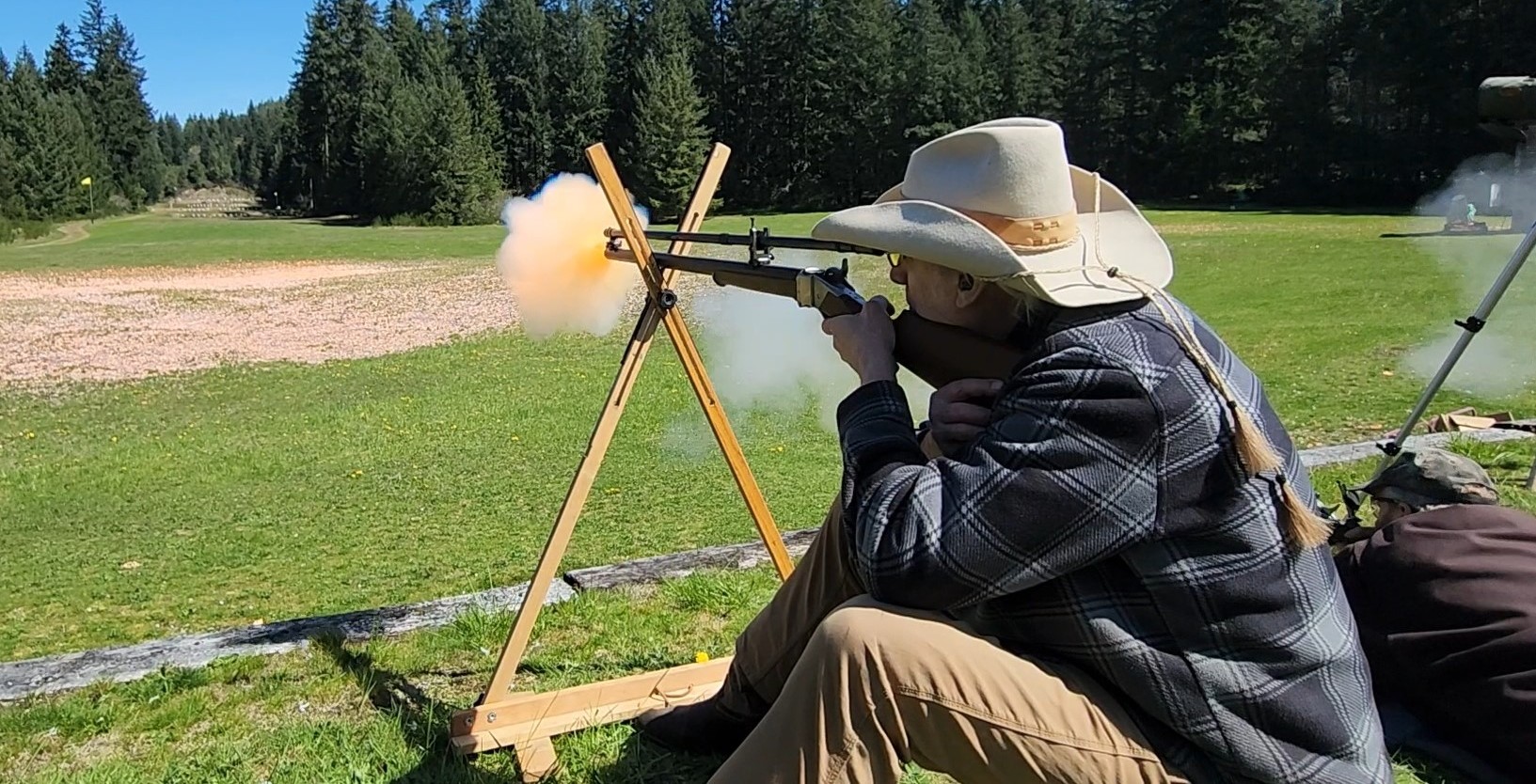
By Mike Nesbitt | Contributing Editor
After shooting Sharps Model 1874 rifles, modern made guns, for over 45 years, I very recently experienced something new.
Actually, a couple of new things took place because a partner met me at a silhouette match where these new happenings surprised us both. Perhaps they shouldn’t have been surprises but they certainly were. Even so, in both cases we were prepared and the interruption to our shooting lasted only a couple of minutes.
The rifle I shot was my current favorite, my heavy Bridgeport Model ’74 by C. Sharps Arms in .45-90 caliber with the full-length Montana Vintage Arms 6X scope. That gun is putting bullets where I’d like them to go, usually, and I’ve never shot better scores, at silhouettes or on bullseye targets, with another rifle. Let me be honest, the only thing I don’t like about it right now is how difficult it is for me to shoot well with it offhand. This rifle weighs 14 ½ pounds which is very nice while shooting it from a rest, such as over cross-sticks, but very hard for me to hold steady while firing offhand.

But the weight of that “buffalo gun” is not what I discussing. What I want to say is how I was surprised by a particular happening while shooting at the ram silhouettes, out at 500 meters (550 yards). My rifle was shooting just fine, then all of a sudden, it wasn’t…
Without really trying to beat around the bush, let me fall back just a little and give you some details about the rifles and the shooting we were doing. Black powder cartridge rifle silhouette matches, as many of you know, involve firing at targets which are standing at 200, 300, 385, and 500 meters, ten targets at each distance for a 40-shot match. There are also “sighter targets” which can be shot at to check sight settings before going for score. The firing relays for timed and shooters do need to keep it going in order to get their shots off at the targets.
More details can be said about the silhouette matches, certainly, but I only mean to let you know what kind of shooting was being done. Setting the scene, in other words.
My rifle, the Bridgeport Sharps in .45-90 caliber, is on the heavy side for a silhouette gun but for me it has been very effective. The lighter rifles I have used simply did not reward me with the scores that I’m getting from this particular rifle. My loads for this gun, however, are not the heaviest. I like to use the 550-grain bullets from a Hock mold (now discontinued) over just 70 grains of Swiss 1½ Fg powder and the .45-90 case holds that much very easily. One reason for shooting only 70 grains of powder is the simple fact that heavier loads kick more severely and 70 grains gives me the performance I like, allowing me to shoot several rounds in a rather short time without discomfort.
In fact, when I ordered that rifle, I picked the Bridgeport version so it would have the flat or “shotgun” butt plate which covers more area on the shooter’s shoulder and seems to reduce the rifle’s felt recoil.
We started on turkeys and I shot in the first relay. My turkeys were falling nicely to my .45-90, especially the second five. Those were all knocked down, which earned me a 5-pin.
Then it was my partner’s turn. That was Mike Holeman and he was shooting his .45-70, another Bridgeport Model by C. Sharps Arms, with a new load using two new paper patched bullets, and with a new iron-sights on his rifle. That meant he had no real idea of where to start and finally found the distance when the relay ended, but with no hits.
The second relay started in good shape. We had moved to the rams at 500 meters. After three shots, with a couple of hits on rams, my rifle’s lever would just fall down. The lever spring under the forearm had broken. Even though I had been warned about the possibility, it was the first time I had that spring break on one of my guns. Previously, more than a couple of years ago, I had bought a couple of extra springs along with some extra firing pins to carry in my line box. Some firing pins and at least one of the springs had been given away so I hoped a new spring was still waiting for me. Hope was on my side; I had one spring left. And, as soon as the forearm could be taken off, that new spring took the place of the broken one and I was back in business.
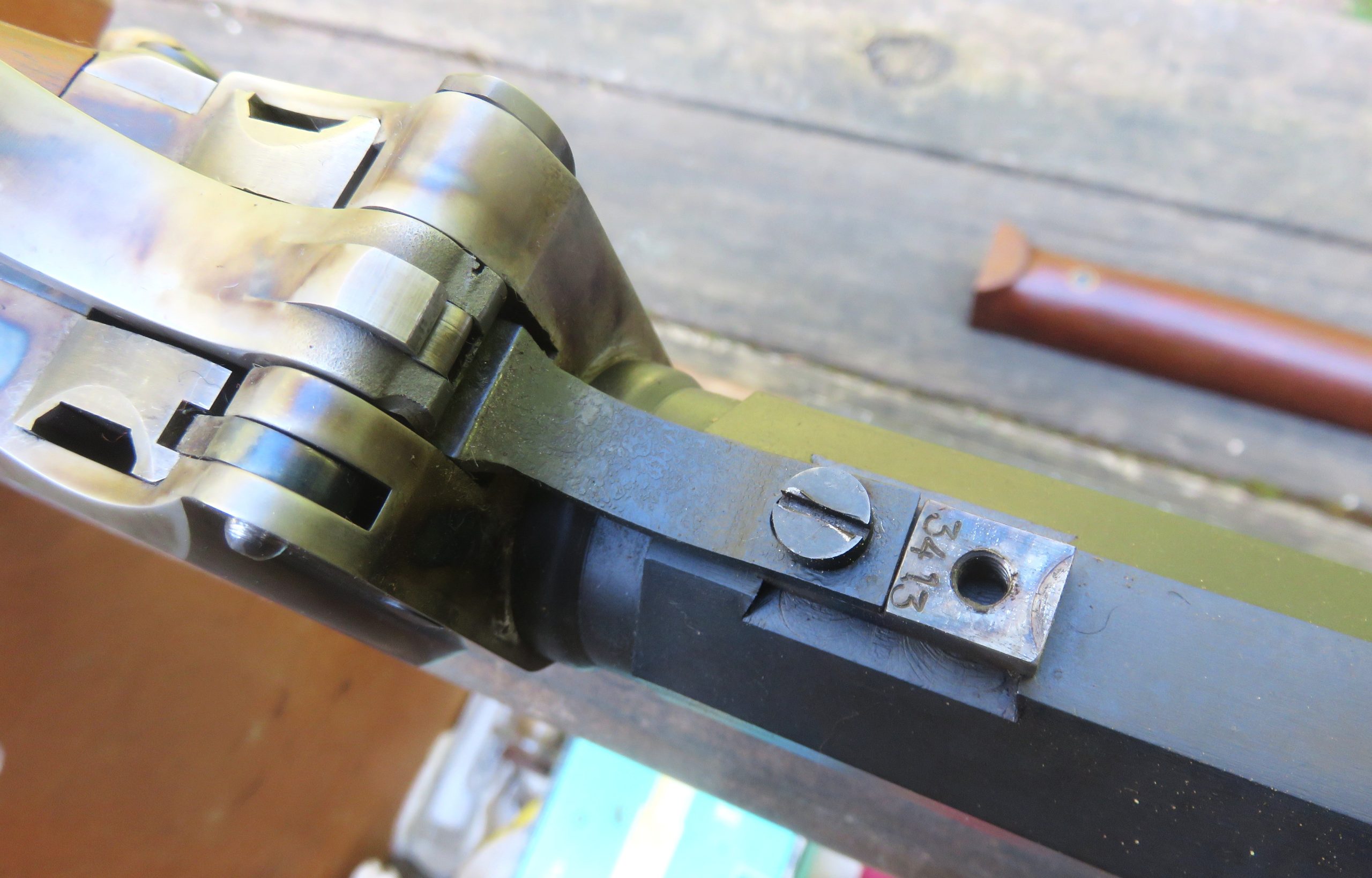
However, before that relay ended, I still had to finish my shooting. That was done by holding the lever up with one hand, in order to keep the breech closed, then setting and squeezing the triggers with fingers on the other hand, which almost completely changed my shooting stance with arms and elbows in new or different places. That was certainly not a technique I’d want to maintain although I did get three more hits on the rams while shooting that way, which gave me a total of five hits for that relay.
The new spring was installed during the break between relays when the silhouettes were being re-set and painted. That was easily done by removing the forearm, held on with two screws on the bottom, then replacing the broken spring. The only tool needed was a screwdriver.
Holeman’s experience or lesson learned was of a completely different nature. His rifle, as noted earlier, is also a Bridgeport Model from C. Sharps Arms in .45-70 caliber, with a 30-inch long #1 Heavy barrel. (The Bridgeport Model Sharps rifles copy the old Sharps guns which were made after 1876, when the Sharps Company moved from Hartford to Bridgeport, Connecticut.)
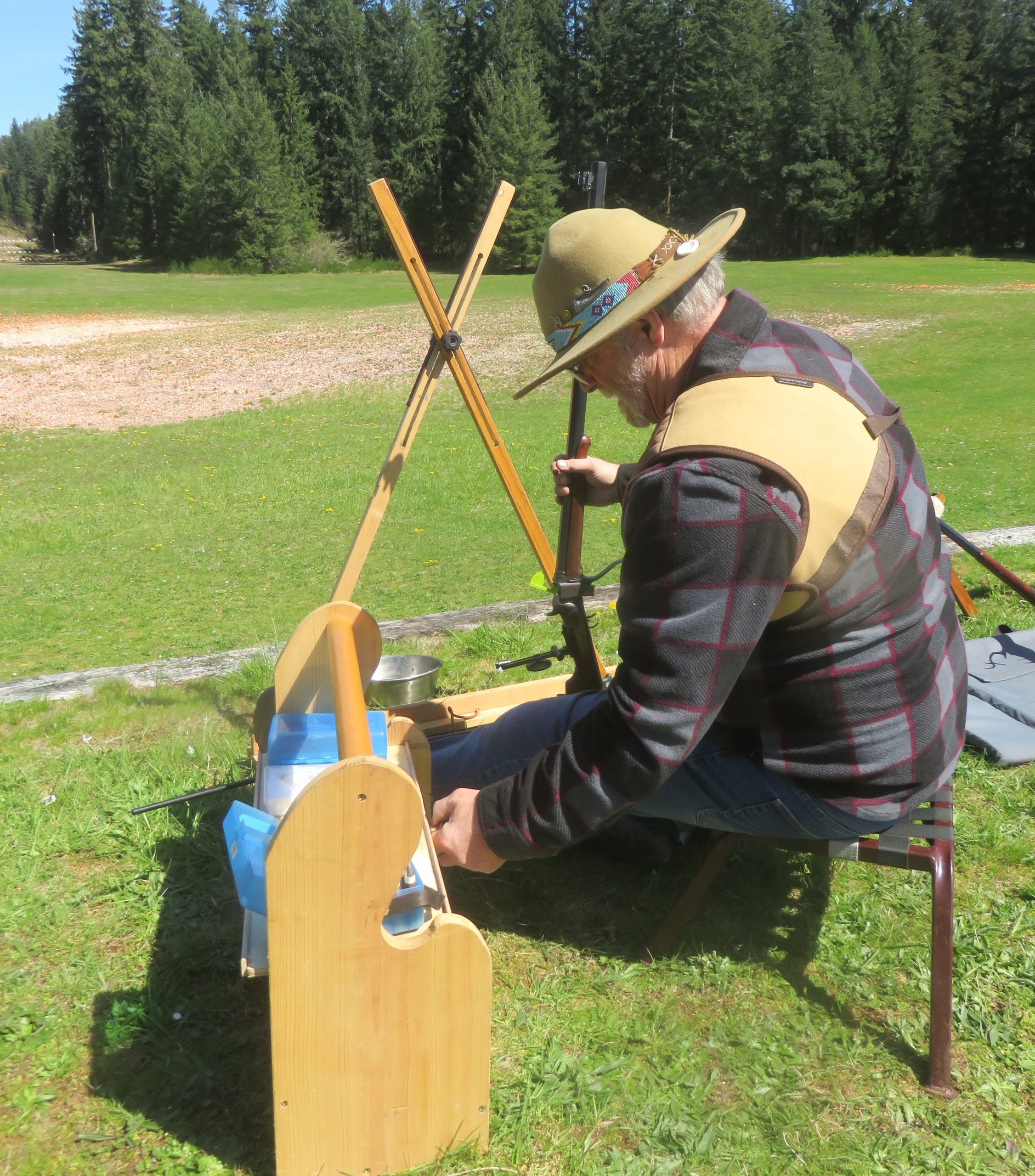
I forget which relay he was shooting in, probably either for the rams or the chickens. Mike was using paper patched loads with no lube under the bullets so he was wiping his barrel for fouling control between shots, with both wet bore wipers (from Buffalo Arms Company) and dry patches. At one point, he was running short on time so he tried wiping with the wet bore wiper, but did not run a dry patch through the chamber and down the bore. That meant his chamber was still damp when the next shot was fired.
Shooting with a wet chamber means the cartridge’s brass case cannot expand and “grip” the walls of the chamber when the shot is fired. When that happens, the forward part of the case will sometimes want to go with the bullet which can result in case separation. This time, the case did not separate but the forward part of the case did try to follow the bullet on one side, enough that the case was stretched and tried to enter the rifling ahead of the chamber. After that shot, Mike noticed this right away because that case had to be removed with a ramrod instead of simply using the rifle’s case extractor. Only one side of the case was actually stretched but that was more than enough.
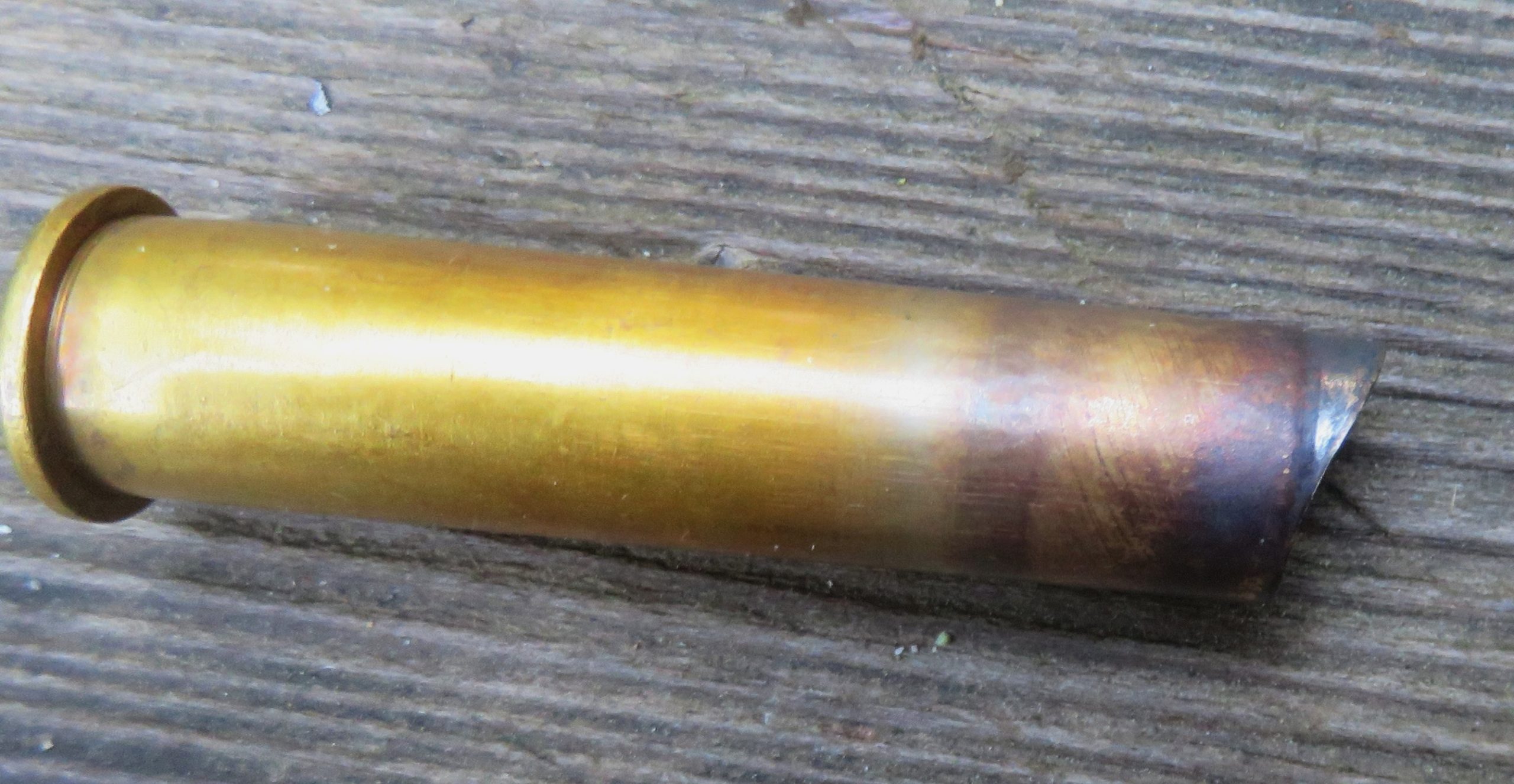
Mike didn’t try to short cut his bore wiping again. Instead of saving time, that move cost him more time as well as a ruined cartridge case. The good lesson here is that too often taking short cuts while shooting does not pay off. Actually, he was lucky that the stretched case came out in one piece with the tapping of his ramrod. Too often they separate and the forward half of the case can be a real bugger to get out of the barrel. As it was, Mike wiped the barrel more completely, drying the bore after cleaning it with the wet bore wipers, and got back to his shooting.
And our shooting did continue. On chickens, I got lucky enough to get one. The chicken silhouettes, of course, are as small as banty chickens and they are shot at from the offhand position at a distance of 200 meters or 220 yards. Tough targets, for sure. At this match, five of our shooters each got two of the chickens and no one got three or more.
One of those five was Larry Litten, who was shooting his .45-70 with a new MVA scope, the first time he used the scope. So, Larry got to share the “chicken money” with four other shooters, that’s a pretty good way to start.
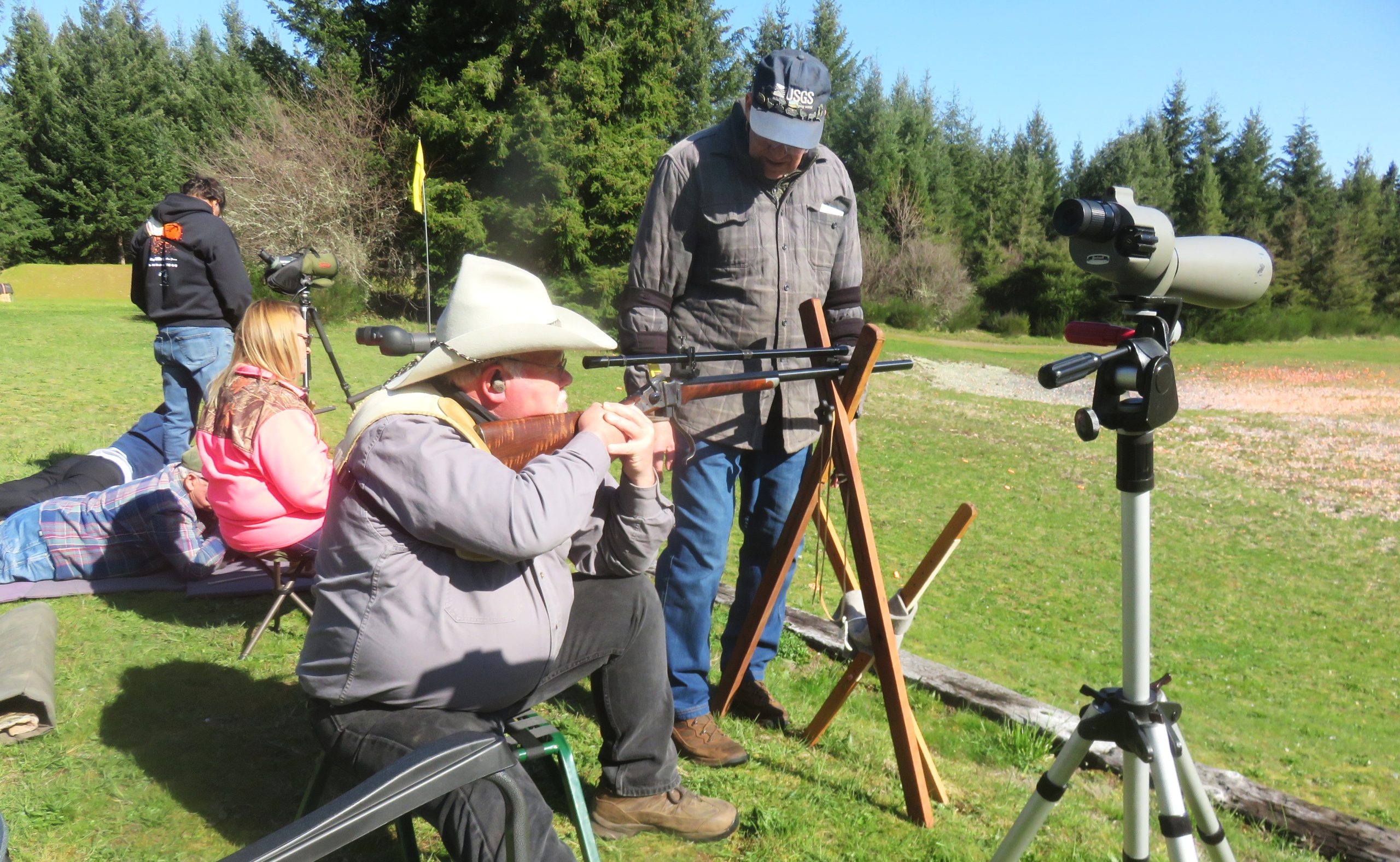
Then came the pigs at 300 meters. I wanted and expected to get a 10-pin on those little porkers. The first five fell just the way they should and I was ready, after the pause between the two banks of five targets. But then it happened.
Diana Mitchell, who was spotting for her husband, Dennis, complimented my shooting. You can guess what happened next. My sixth shot, the first in the second half of that relay, was probably the closest miss I have ever shot, but it was still a complete miss. I told Diana that she owes me one because of her errant compliment! But the next four pigs all fell, giving me 9 good hits and, yes, another 5-pin.
My total was 22 hits and I fired just 48 shots for sighters and score. That put me in third place among the scope shooters, winning the two 5-pins, one for turkeys and the other for pigs, to add to my small collection.
It had been a very good morning for shooting and we were done by early afternoon. Holeman talked with me about shooting the silhouette match again and, of course, I quickly agreed to join him. That will be after I have replaced the extra Sharps lever spring in my line box and after Mike gets a new batch of bore drying patches. We can tell the world that we’ve learned our good lessons.



